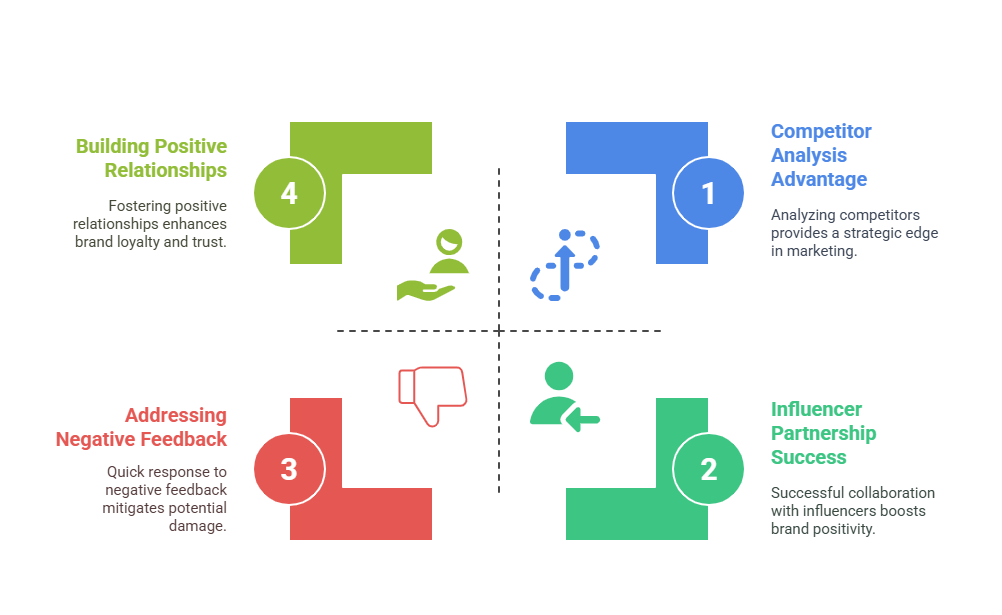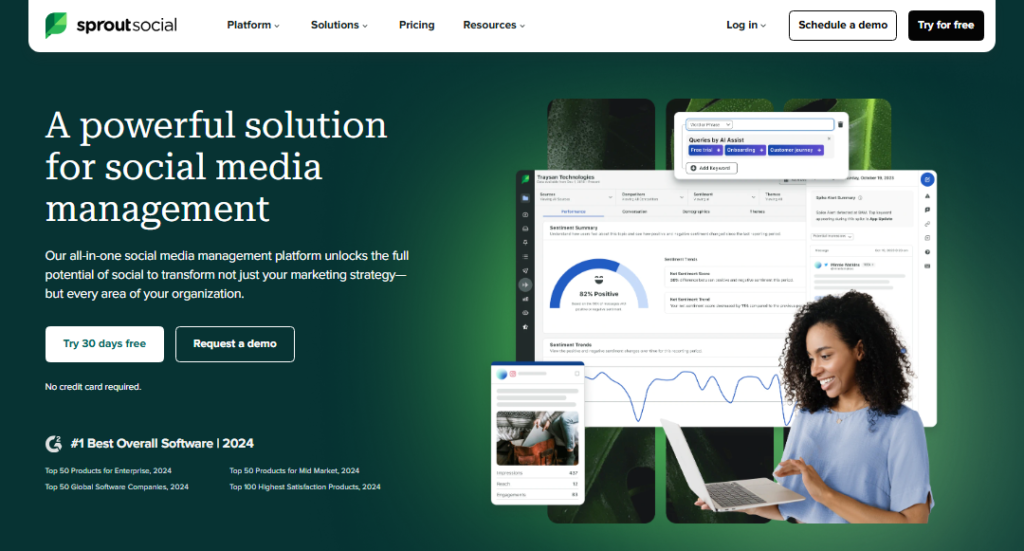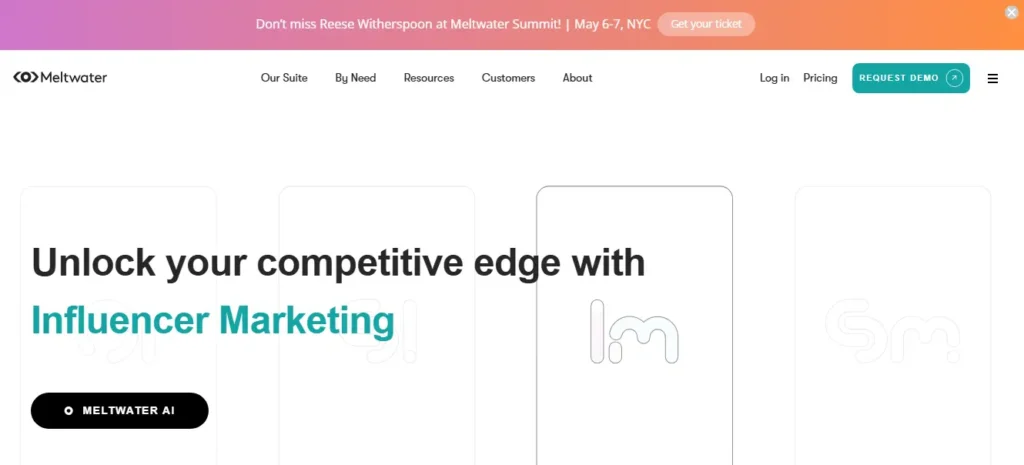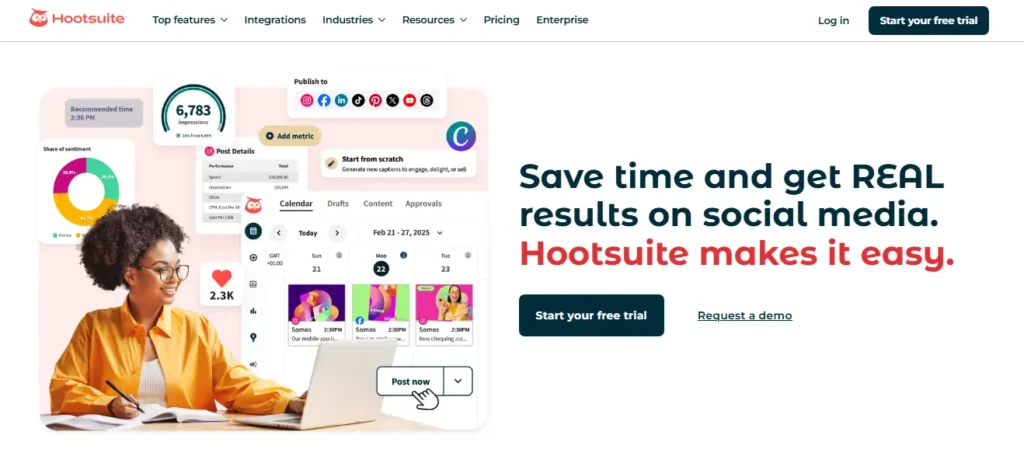Finding out what people say about your brand can be tricky. In this Brandwatch Review, I’ll show you how this tool helps track mentions, spot trends, and understand customer feelings. I’ve tested its features and learned how to use it best.
Whether you’re a business owner or marketer, I’ll explain it in a simple way. Let’s dive in and see if Brandwatch is right for you!

How It Works for Me
I struggled to track online conversations about my brand. Social media was noisy, and I needed a tool to filter the clutter. Then, I found Brandwatch. It helps analyze trends, track brand sentiment, and give audience insights. At first, I was unsure. But after using it, I saw how much data it pulls and how well it organizes everything.
What I Like
- Lots of Data Sources – Brandwatch gathers data from social media, blogs, forums, and news sites. It finds what people say about my brand.
- Smart Sentiment Analysis – It goes beyond basic labels. It shows emotions and context, helping me understand audience feelings.
- Competitor Analysis – I can compare my brand with others and adjust strategies.
- Custom Dashboards – I can track different projects without getting lost in data.
- Easy Integrations – It works with tools like Hootsuite, Google Analytics, and Slack.
What Could Be Better
- High Price – Brandwatch is expensive. It’s best for bigger businesses. (If you ask how much does Brandwatch cost per year, it depends on the plan.)
- Takes Time to Learn – There are many features. It takes effort to master. Brandwatch Academy offers training, but it’s not instant.
My Personal Experience
Brandwatch helps me stay ahead of trends. One time, I noticed a rise in negative comments about a product. Thanks to Brandwatch, I found the issue fast. An influencer shared a misleading review. I cleared the confusion and stopped further damage.
Another time, I found key brand ambassadors by tracking who mentioned my products the most. This led to a great influencer partnership.
A friend runs an agency and uses Brandwatch for clients. He loves the competitor analysis feature. It helps him create marketing plans that win.

Recommendation
If you need deep insights and real-time tracking, Brandwatch is great. It’s perfect for brands, agencies, and marketers who rely on data.
But if you’re a solo entrepreneur or need basic tracking, a simpler tool might work better. Brandwatch is powerful—but only if you use all its features. If you want a top social listening tool and can afford it, it’s worth it!
How I Use Brandwatch Effectively
At first, Brandwatch seemed hard. But with practice, I made the most of it. Here’s a simple guide for beginners.

1. Setting Up Your Account
Sign up and log in. Brandwatch guides you through setup. Enter your brand name and key topics. Start simple—just add the basics.
2. Creating a Search Query
Brandwatch tracks mentions. Use the search tool to pick what to follow. Start with your brand name, rivals, or industry terms. You can refine it later.
3. Exploring the Dashboard
Data starts flowing in. The dashboard shows trends, brand mood, and top mentions. Use filters to focus on what matters. If tracking a campaign, set up a separate view.
4. Understanding Sentiment Analysis
Sentiment analysis is my favorite feature. It tells me if talk is good, bad, or neutral. I use this to find happy customers and fix problems fast.
5. Analyzing Competitor Data
Want to see how you stack up? The competitor tool helps. It shows where I stand against others. This helps me improve my marketing.
6. Optimizing Content with Insights
Brandwatch isn’t just for listening. It helps make better content. I check what gets the most engagement and adjust my posts. If a trend grows, I act fast.
7. Automating Alerts
I set up alerts to stay updated. When someone mentions my brand, I get a notice. This saves time since I don’t have to check the dashboard all day.
Using Brandwatch takes practice, but it’s worth it. Follow these steps, and you’ll track trends and make smart decisions in no time!
Brandwatch Alternative
Looking for a Brandwatch alternative? You’re not alone. Social listening tools help track trends, but they don’t all work the same way. If Brandwatch feels too pricey or complex, here are some great options.
Sprout Social

Sprout Social is a smart pick if you need both social listening and scheduling. It tracks mentions, spots trends, and helps you plan content. It’s easier to use than Brandwatch. But it doesn’t pull as much data. If you run a small business, it’s a solid choice.
Talkwalker

Talkwalker is powerful. It scans social media, blogs, and news sites. AI-driven sentiment analysis helps you understand audience feelings. It’s great for real-time tracking. The downside? It can be pricey and a bit complex for beginners.
Meltwater

Meltwater goes beyond social media. It tracks news sites, blogs, and online conversations. It’s great for PR teams and brands that want media coverage insights. But it’s not as social-focused as Brandwatch.
Hootsuite Insights

Hootsuite Insights is powered by Brandwatch. If you use Hootsuite, it’s a simple way to track mentions and trends. It doesn’t go as deep as Brandwatch, but it’s a good choice for basic social listening.
My Personal Recommendation
Want deep insights? Talkwalker is your best bet. Need a mix of social listening and scheduling? Sprout Social is a great pick. If you care about media tracking, go for Meltwater.
At the end of the day, it depends on what you need. If Brandwatch feels too much, one of these might be just right.
My Final Thoughts
If you love data and want strong social listening tools, Brandwatch is a great choice. It helps marketers and businesses track trends and insights. But if you need something simple and budget-friendly, you may want to look elsewhere.
From my experience, Brandwatch gives deep and accurate insights. It takes time to learn, but once you do, it’s worth it!